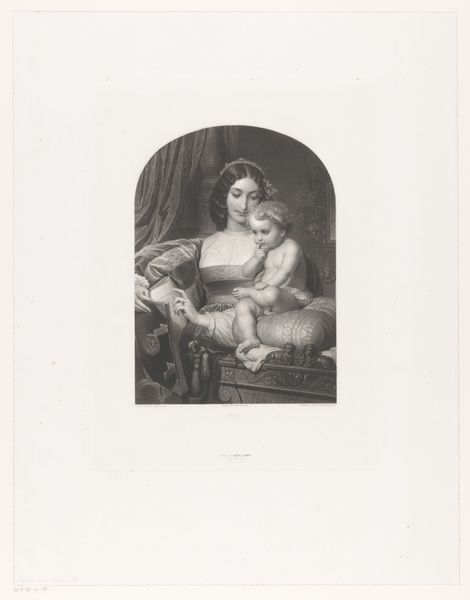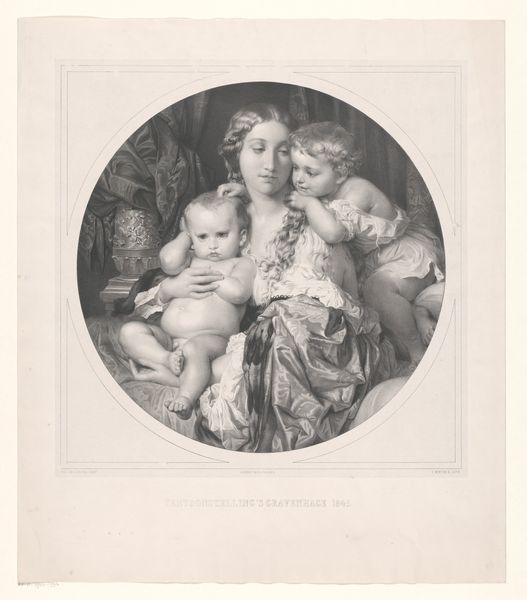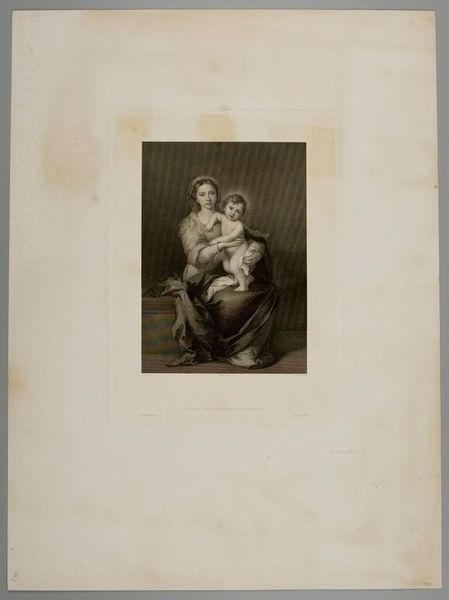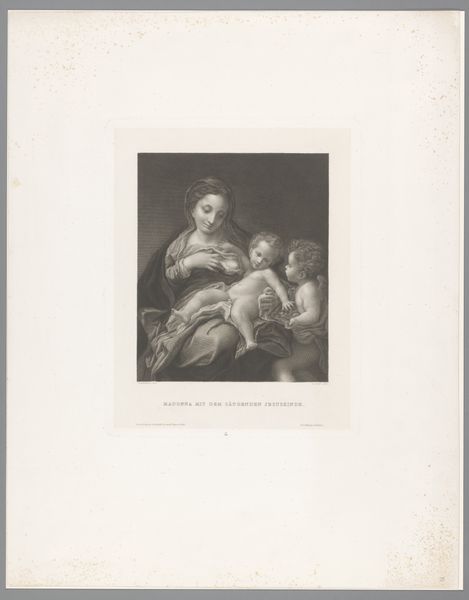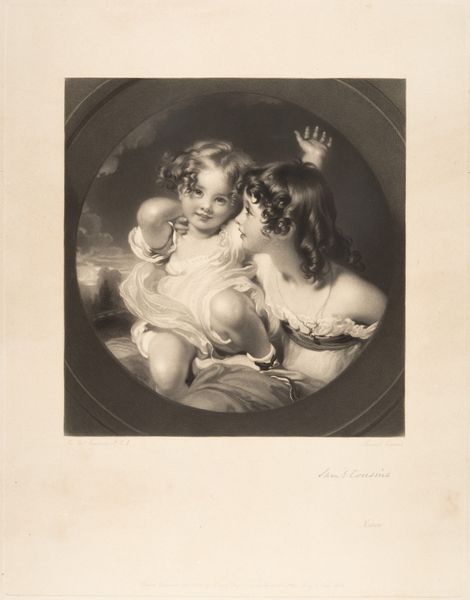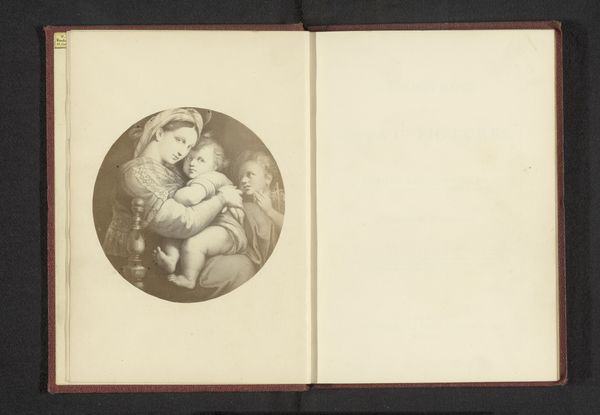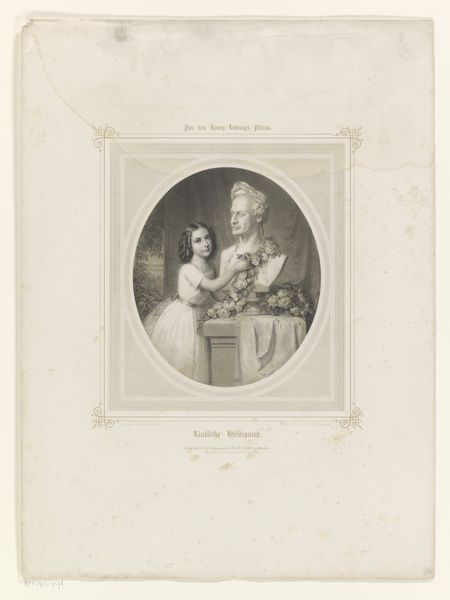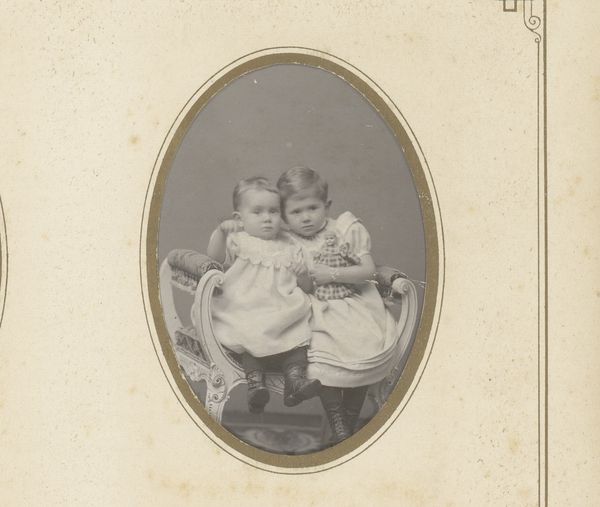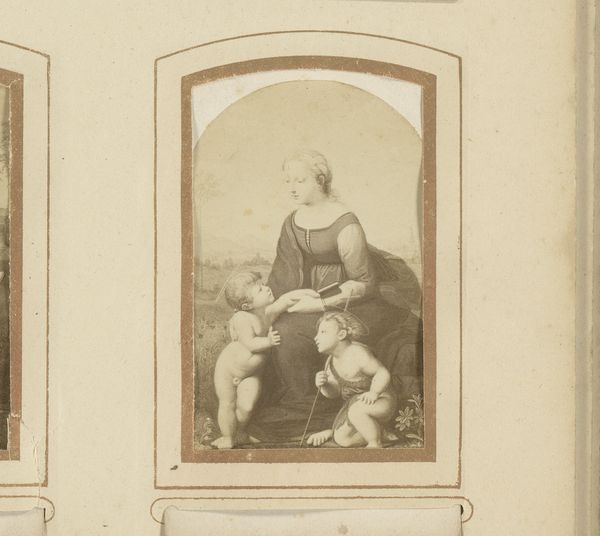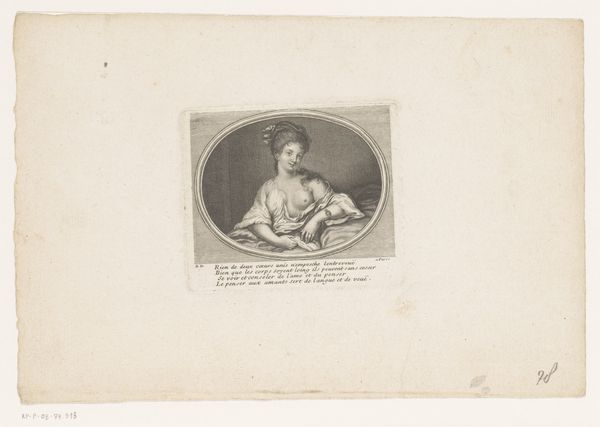
Dimensions: height 445 mm, width 595 mm
Copyright: Rijks Museum: Open Domain
Editor: This lithograph from the 1850s by Carl Straub, "Two Representations of Mother and Child," presents a diptych of sorts. One oval depicts what looks like a contemporary portrait, and the other seems inspired by Renaissance Madonnas. What symbols and cultural ideas were circulating to inspire this composition? Curator: Notice how the two depictions play with familiar imagery of motherhood. On one side, we have a modern mother, elegantly dressed, holding her child. On the other, a classical, almost ethereal Madonna. The arrangement emphasizes how society framed motherhood then – the tension between earthly experience and idealized virtue. Do you observe specific details in their postures, in the folds of their clothing, that speak to this contrast? Editor: The modern mother seems almost... constrained in her pose. The Madonna, however, radiates serenity, doesn’t she? It’s like two distinct emotional registers on display. Curator: Precisely! And the contemporary mother's clothing versus the Madonna's robes further underscores the difference. It's fascinating how these familiar, visual symbols work to legitimize contemporary ideas, referencing timeless cultural values and ideals. How do you think a nineteenth-century audience might have interpreted the artist’s use of such well-known symbols? Editor: Maybe as a commentary on the evolving role of women, but also on the persistent, almost timeless expectation of maternal perfection? Thank you, it really gives a glimpse into how powerful symbols work across cultures and throughout history. Curator: Absolutely, a convergence of tradition, representation, and social commentary!
Comments
No comments
Be the first to comment and join the conversation on the ultimate creative platform.
